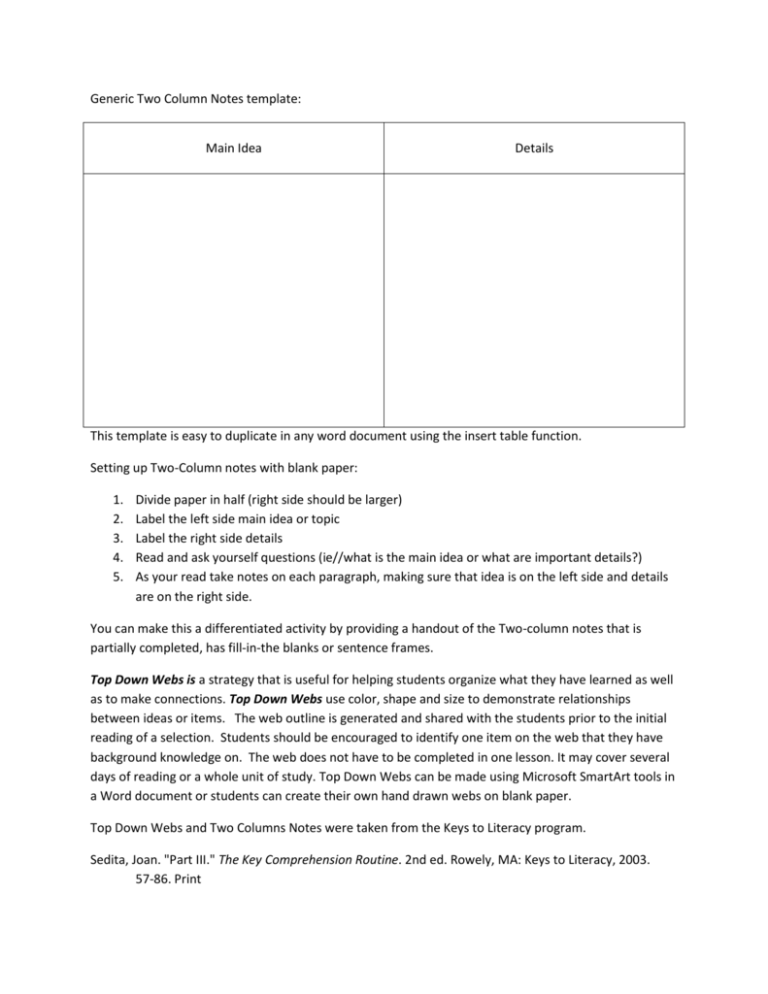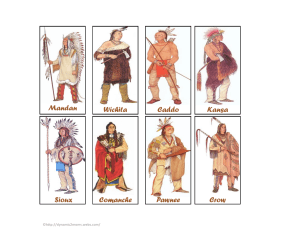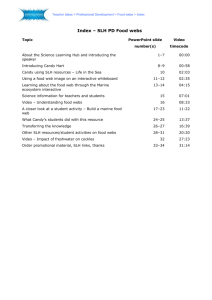Handouts for presentation
advertisement

Generic Two Column Notes template: Main Idea Details This template is easy to duplicate in any word document using the insert table function. Setting up Two-Column notes with blank paper: 1. 2. 3. 4. 5. Divide paper in half (right side should be larger) Label the left side main idea or topic Label the right side details Read and ask yourself questions (ie//what is the main idea or what are important details?) As your read take notes on each paragraph, making sure that idea is on the left side and details are on the right side. You can make this a differentiated activity by providing a handout of the Two-column notes that is partially completed, has fill-in-the blanks or sentence frames. Top Down Webs is a strategy that is useful for helping students organize what they have learned as well as to make connections. Top Down Webs use color, shape and size to demonstrate relationships between ideas or items. The web outline is generated and shared with the students prior to the initial reading of a selection. Students should be encouraged to identify one item on the web that they have background knowledge on. The web does not have to be completed in one lesson. It may cover several days of reading or a whole unit of study. Top Down Webs can be made using Microsoft SmartArt tools in a Word document or students can create their own hand drawn webs on blank paper. Top Down Webs and Two Columns Notes were taken from the Keys to Literacy program. Sedita, Joan. "Part III." The Key Comprehension Routine. 2nd ed. Rowely, MA: Keys to Literacy, 2003. 57-86. Print FOSO Organizer Facts (true) Subjective (influenced by personal feeling) Opinions (a personal view) Objective (not influenced by personal feelings) Bias (preference in favor or against something, unequal, unfair) I know the author believes _________because ________________________________. The author included this detail because _______________________________________. FOSO Graphic Organizer You can use any type of text or media to evaluate its content. I have used this with newspaper articles, magazine articles, and advertisements. It can also be used with news videos or radio podcasts. A good follow up activity is to have students read articles on the same topic with opposing viewpoints. Students can choose a side and orally defend their position. 4 C’s Count, Color, Circle & Code Count # Number each of the paragraphs Color Highlight key elements identified by the teacher o Examples: Main Ideas, supporting details, vocabulary Circle o Examples: Claims, key terms, figurative language, power verbs Code Make notes in the margins as you read ? ! X LOL Questions or confusion important agree disagree Funny Characters feelings or your feelings Character Evidence Create your own Sticky Strategies Strategy Character Traits (green) Traits Trait changes Protagonist Antagonist Questions (blue) Why did the character say that? Why did a character do that? What does this word mean? It says…I Say… (orange) Use text evidence The text says________ this tells me____ Predictions (pink) What will happen next? What will a character do or say next? Share (yellow) Make a connections: to self to another story to the world Literary Elements (purple) Theme Conflict Setting Rising Action Conclusion Example











